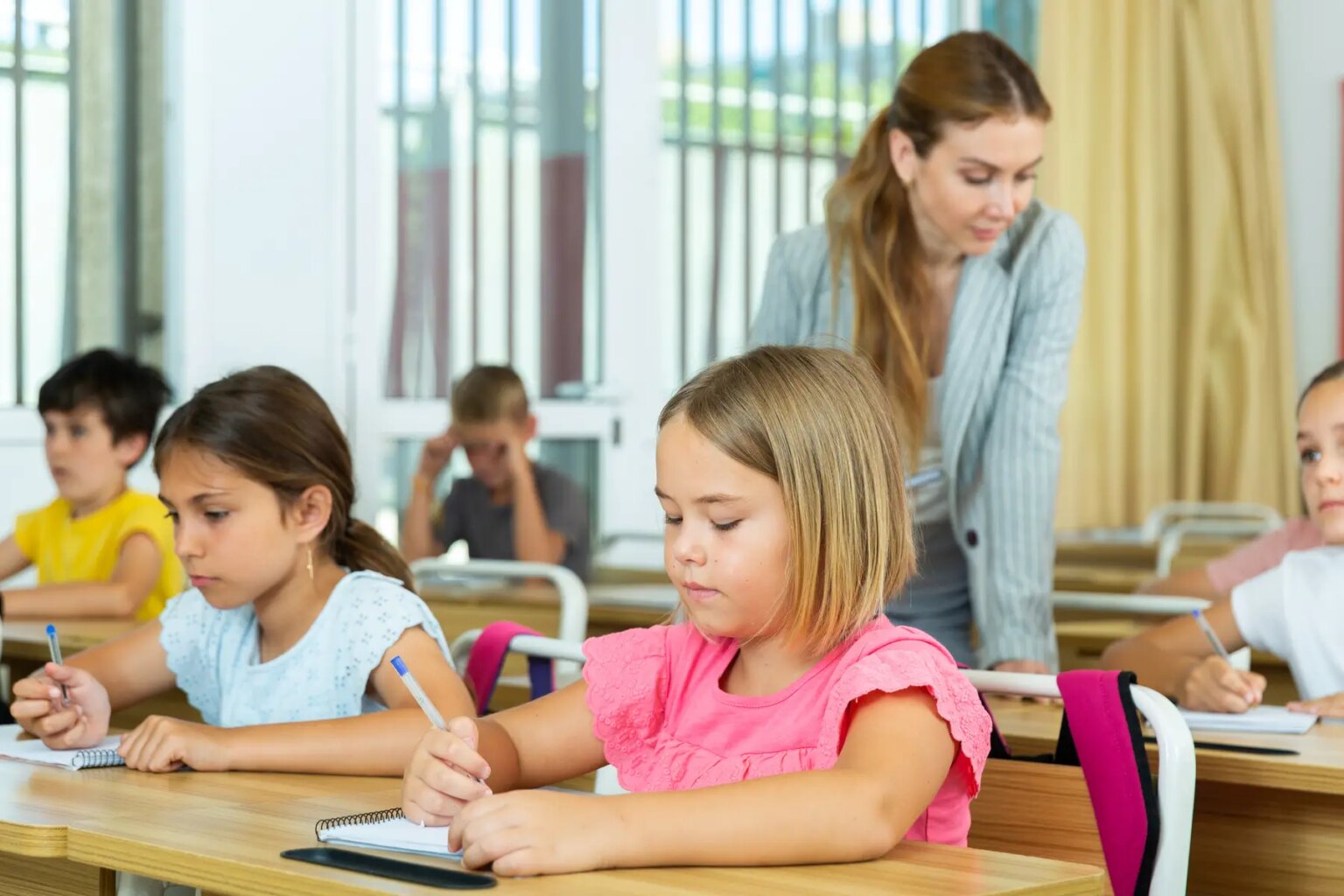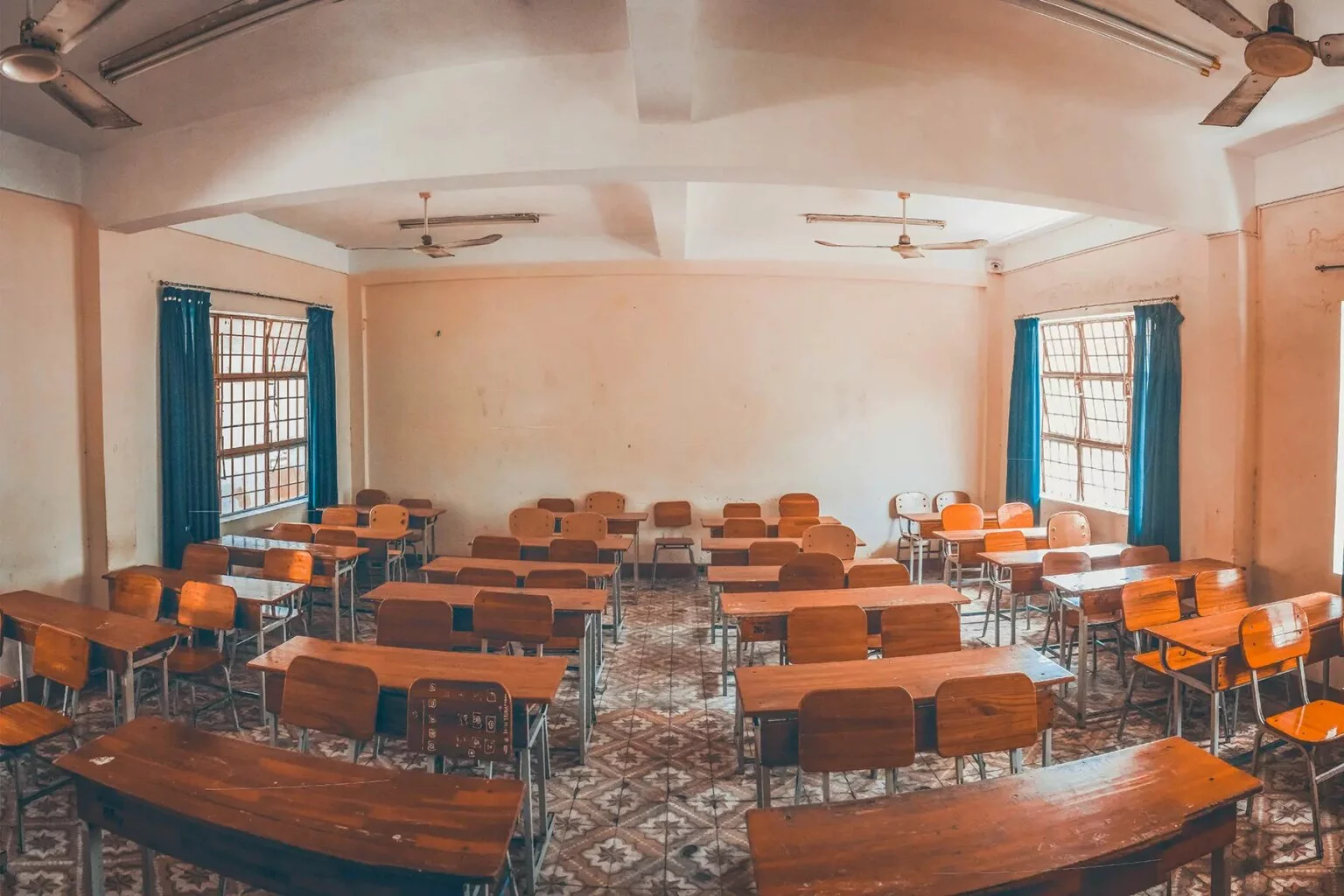There are a variety of primary schools within the German education system that you can enroll your child in. For instance, you can choose from local state schools, state-subsidized private schools, or fully independent schools, including international and bilingual schools.
To help you understand your options, this guide to German primary schools includes information on the following:
Bavarian International School (BIS)
Give your child the best start in life with Bavarian International School. With two campuses in and around Munich, this English-language school aims to inspire young, curious minds from Kindergarten to Grade 12 through its IB curriculum. BIS also offers many out-of-hours activities for personalities to flourish holistically.
The primary education system in Germany
In Germany, children must attend primary school (Grundschule) from the age of six. In most German states (Länden), primary education lasts for four years, however, in Berlin and Brandenburg, it lasts for six. It is important to know that homeschooling is illegal in Germany. In fact, you can face strict fines or even imprisonment if you fail to enroll your child in a school.
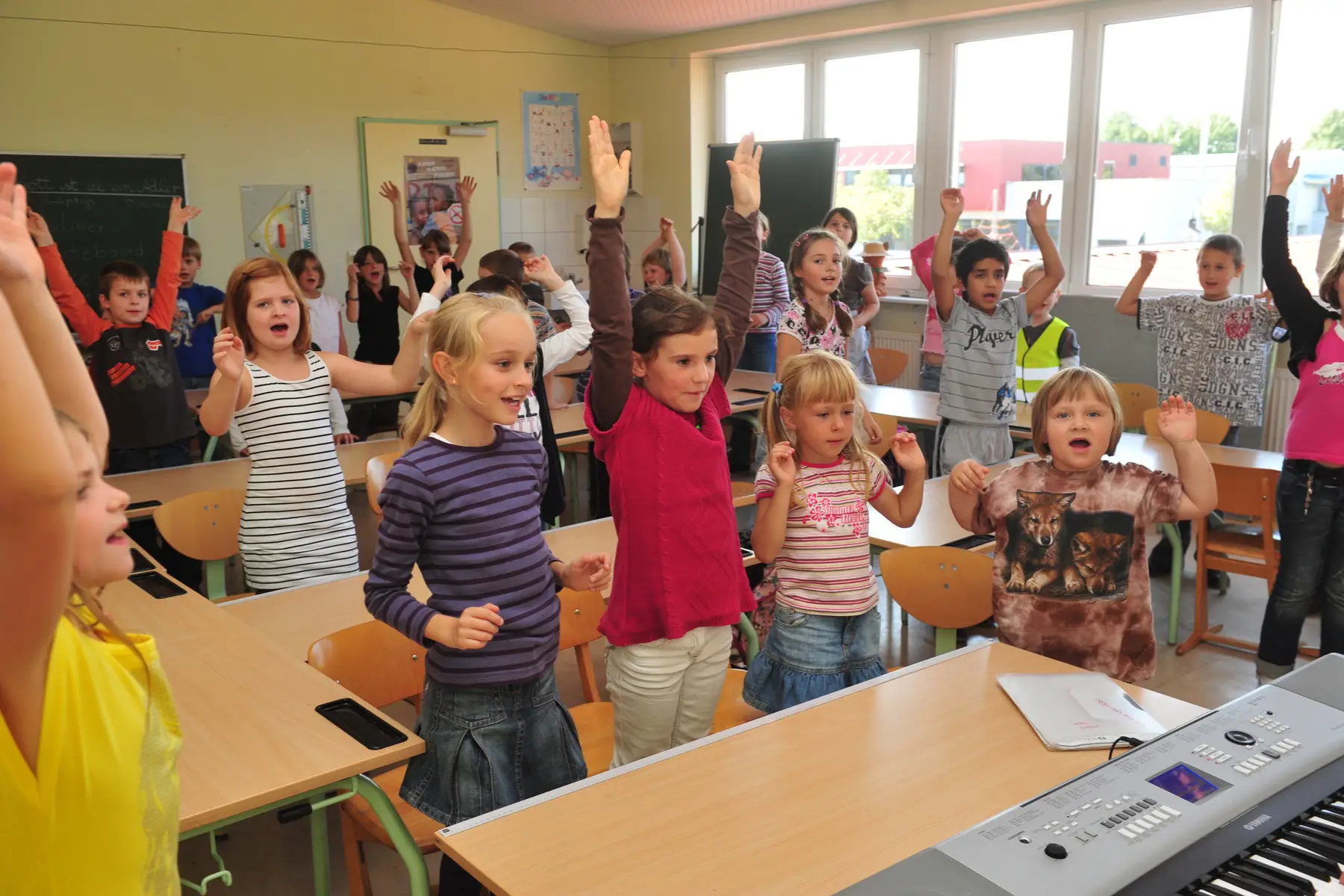
Parents can choose between state or private German primary schools, however, only around 5% of students in the country attend the latter. That said, this figure is higher among the expat population. This is because state schools only teach in German, whereas international schools offer sessions in foreign languages, such as English, with some providing bilingual classes.
State primary schools in Germany
According to official statistics from 2022, there are 15,466 German primary schools in total. The vast majority of these are state schools and nearly 95% of children in Germany attend public primary schools.
State primary schools are free to attend in Germany and offer high-quality education. There are also state-subsidized private schools, including a number of religious and alternative schools, which usually receive public funds for each student. Each federal state is responsible for its own education including the curriculum and school calendar.
The breakdown of school years in German primary schools can be complicated if you are not used to the system. Generally, the primary school (Grundschule) years run from grades 1 to 4 in 14 federal states. However, in Berlin and Brandenburg, primary schools include grades 5 to 6.

Across all states, except for Berlin and Brandenburg, grades 5 and 6 are an orientation phase that takes place in the first two years of secondary school. During this time, students, parents, and teachers collaborate to determine which schooling stream (and subjects) they will follow in the subsequent secondary school phase. It may even happen that students change school stream. You will find a detailed explanation of the streaming system in our guide to secondary schools in Germany.
According to the annual INSM Bildungsmonitor (which evaluates the education system in each state), the top-performing states in 2021 for primary education are Saxony, Bavaria, and Hamburg. The lowest-performing states, meanwhile, are Bremen, Brandenburg, and Saxony-Anhalt.
The curriculum in state primary schools in Germany
State primary schools generally teach around 20 to 30 hours per week. The school day typically starts around 08:00 or 09:00 and finishes around 13:00 or 14:00; although many schools now run until later in the afternoon. Term times and holiday dates vary from state to state. That said, the school year typically runs from mid-August or early September to the end of June or the start of July.
German school holidays include:
- Autumn break (Herbstferien) – one to two weeks in mid-October
- Christmas break (Weihnachtsferien) – two to three weeks in January/February
- Easter break (Osterferien) – two to three weeks in March/April
- Summer break (Sommerferien) – around six weeks in June/July
There are also several public and religious holidays that vary across the states. Some states also have an additional one to two-week break in February.
Typical primary school subjects
Subjects covered in German primary schools vary between states but generally include the following:
- German
- Mathematics
- Science
- Art
- Social sciences (history, geography, economics)
- Physical education (PE)
- IT
- Social studies
- Foreign languages
- Music
- Religion or ethics
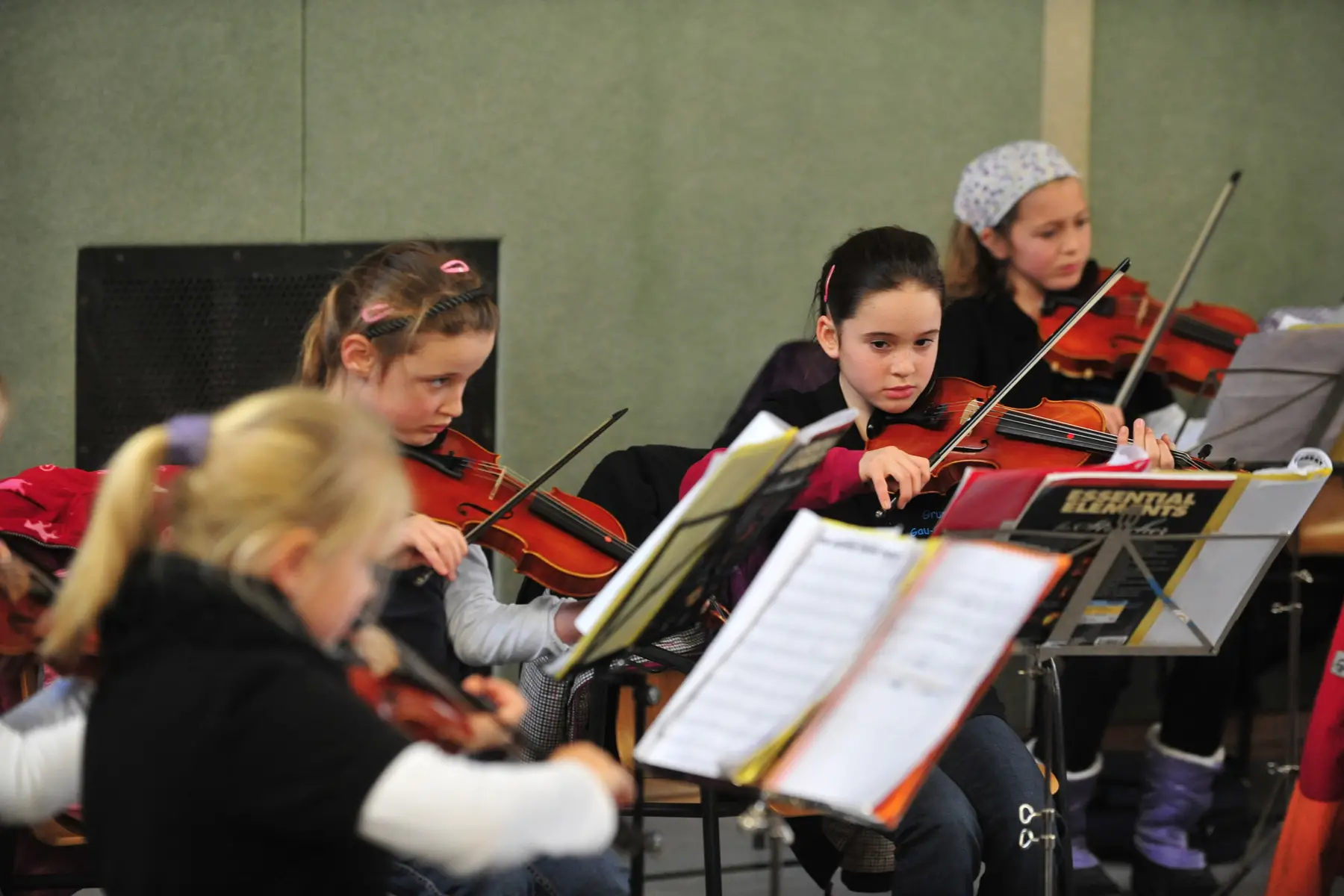
Students are assessed from grade 2 and have to repeat a year if they don’t achieve minimum standards. The scoring system ranges from 1 (very good) to 6 (very poor). At the end of Grundschule, teachers assess the child’s abilities and interests and make a recommendation (Übergangsempfehlung) to parents about which type of secondary school would suit their child.
Many state primary schools run after-school activities, such as afternoon clubs, homework workshops, and sports activities. Parents may have to pay monthly or annual fees for these or fund the purchase of equipment needed. However, those on low incomes may be able to get subsidies.
The pros and cons of state schools in Germany
State primary schools in Germany have advantages and disadvantages. Below, we list some considerations to factor in when deciding to send your child to a German primary school.
Advantages
Benefits of sending your child to a state primary school in Germany include:
- It’s free, so can be a great option, especially if your child already speaks German or is young enough to pick up the language easily
- The standard of state education in Germany is high, although this does vary between states
- It will help your child better integrate into the local area and make German friends
Disadvantages
However, state schooling might not be the best choice for every family. As such, limitations include:
- The German instruction language may be challenging for a slightly older child with no German language skills
- Restricted choice; you generally have to send your child to the nearest school in your catchment area and will need a good reason if you want them to attend a different school
- Some schools are only open until early afternoon, meaning that you may have to arrange childcare or pay for after school activities
- They offer fewer extra-curricular activities and opportunities than most private schools
Applying to state primary schools in Germany
Enrollment for German primary schools starts quite early; usually between six to 11 months before the start of the school year. The state school in your catchment area will typically invite you to register. Most schools hold open days around late September, so you can check things out the year before your child is due to attend.
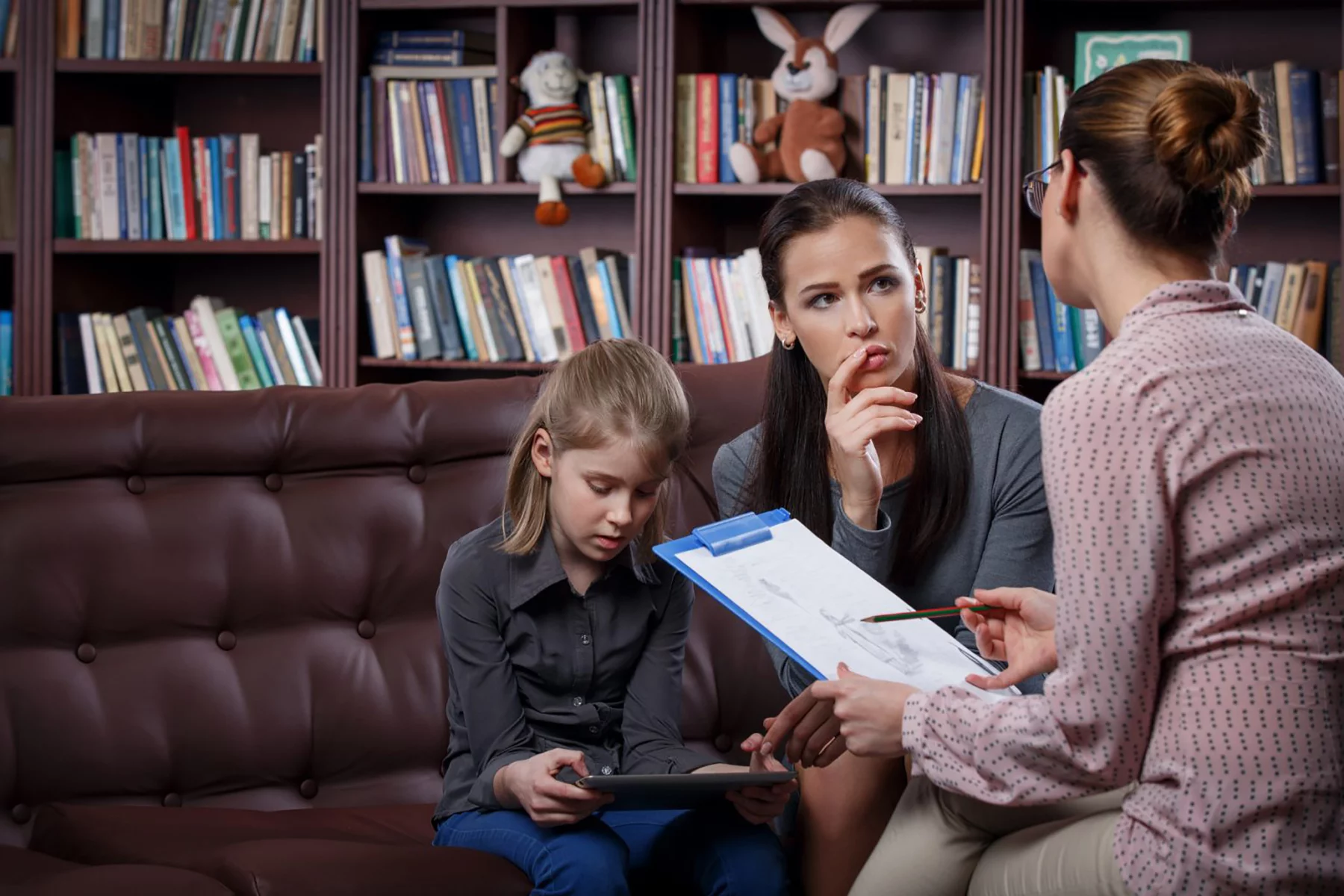
A child typically starts school in the autumn term of the year they turn six, however, some German states have cut-off dates (such as 30 June). This means that if your child is born late in the year, they may have to wait until the following year or pass an entry test (Einschulungsuntersuchung) before they can start school.
Your local school should send you an application form which you will need to complete and either return to the school or send to the local registry office (Bürgeramt), depending on the procedures within your state.
Required documents
You will usually need to provide your child’s:
- Birth certificate
- Passport
- Proof of residency
Your child will then undergo a medical check to confirm that they are in good health and that they have the cognitive skills to attend the school without needing additional support.
If you want to send your child to another school, you have to apply for a place and will usually have to demonstrate sufficient ties to the catchment area. Typically, you will need to register at the assigned school and, after that, fill out an application form to change (Umschulungsantrag). You can make this application through your local authority.

Interestingly, the German school tradition is to give a child a large paper cone (Schultüte) filled with treats, school supplies, and small gifts on their first day of school.
Private German primary schools
In Germany, private primary schools fall roughly into three categories: denominational or religious schools, international schools, and alternative schools. There is also a handful of subsidized non-denominational community schools known as Gemeinschaftsschulen.
In most states, private primary schools can only be established if they serve a special pedagogical interest and no state school of that type exists locally.
Denominational or religious schools
These schools are mostly state-subsidized and are similar to state primary schools. For example, the curriculum and term times are pretty much the same as public schools in each state. The main difference is that they are run by religious institutions rather than local state authorities. The state subsidizes around two-thirds of the costs per child at these schools, with parents paying the remainder in fees.
Most denominational schools in Germany are Roman Catholic or Lutheran. While pupils don’t necessarily have to follow the religion of the school, they are expected to respect its values and traditions. The religious education (RE) classes are more focused on the school’s religion, whereas, in state schools, they are more general or sometimes taught as ethics rather than religion.
Waldorf schools (Waldorfschulen)
Waldorf schools (Waldorfschulen) have existed in Germany since 1919. These are alternative or method schools that are founded by Rudolf Steiner. They are based on the philosophy of anthroposophy and primarily focus on a child’s creativity and the arts.
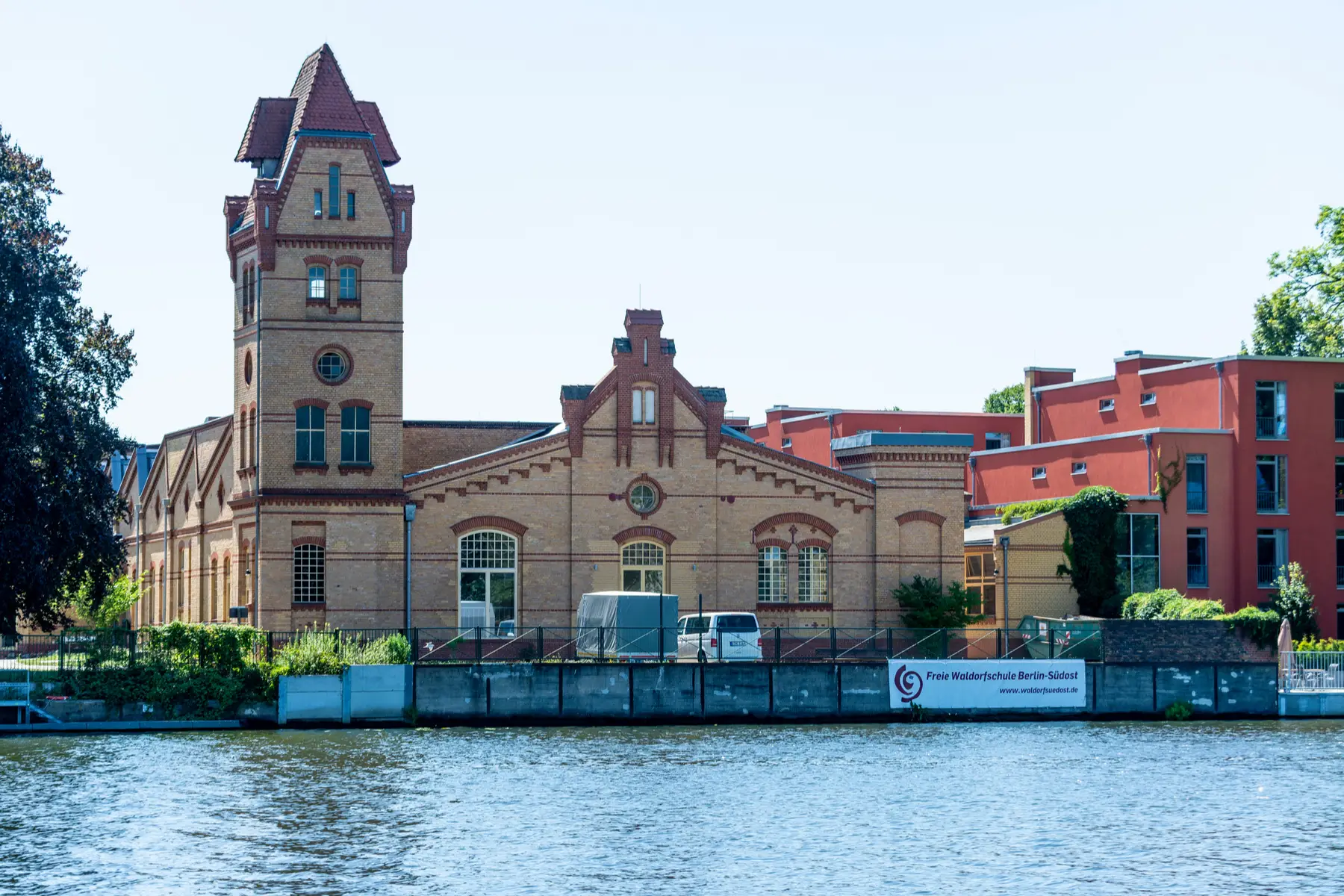
There are 254 Waldorfschulen in Germany which are mostly state-subsidized. Their curriculum has to meet state requirements but differs substantially from conventional state schools. These schools place a greater emphasis on learning and development through arts and crafts, music, and storytelling alongside lessons in mathematics, science, and history.
Waldorf schools provide education at kindergarten, primary, and secondary stages, and is split into three curriculum levels:
- Lower stage (elementary): grades 1–4
- Intermediate stage: grades 5–8
- High school stage: grades 9–12
Waldorf schools agree on fees with parents in advance, based on income or a fixed agreed contribution.
Montessori schools
There are around 270 Montessori schools in Germany, including Tanus International Montessori School (TIMS) in Frankfurt. These are method schools based on the constructivist child development teachings of Dr. Maria Montessori. Teaching focuses on allowing children to develop and follow their natural interests, with teachers playing a supportive rather than an instructional role.
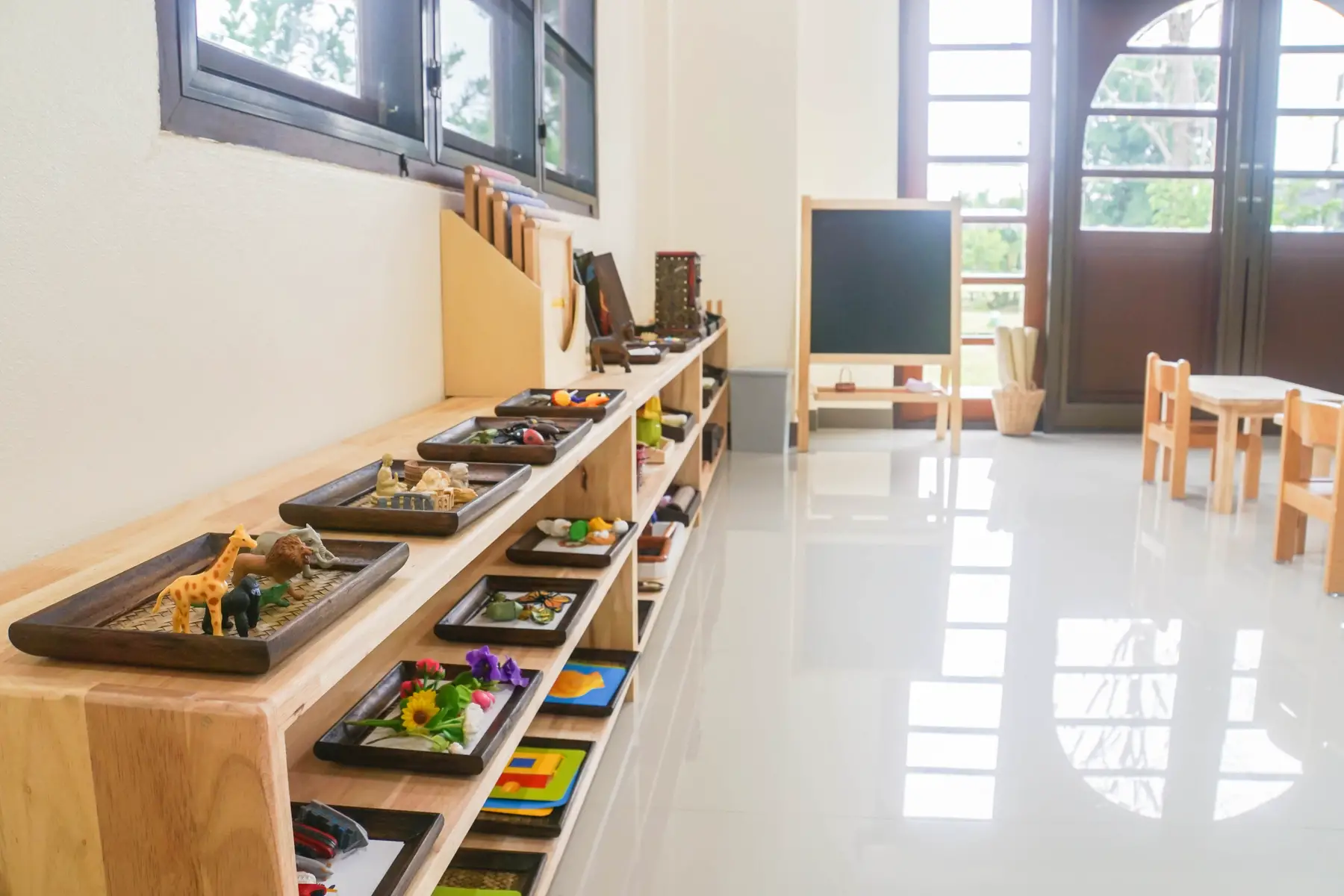
Similar to Waldorfschulen, Montessori schools run from early through to secondary years. Classrooms are often mixed-age and international, with many teaching in English as well as German. The curriculum is typically sensory-based and involves a lot of outdoor learning focused on self-expression. Subjects include languages, mathematics, science, social studies, and art.
Montessori schools can be state-subsidized or fully independent. Fees vary and depend on whether the schools receive a government subsidy, however, many of them charge income-based fees.
International schools in Germany
There are more than 100 international schools in Germany. Most of them are located in the bigger cities, such as Berlin, Munich, and Frankfurt, where there are many international families, and they often offer schooling right through from kindergarten to the end of secondary education (ages 3 to 18). International schools are usually fully independent but offer an academic education that meets both German and international standards.
They typically have high standards of education, smaller class sizes, and lots of extra-curricular activities, which makes them popular with expat families. Most are day schools, although some offer boarding facilities.
Many of these schools have been set up by UK or US organizations and teach primarily in English; however, some also teach in German. You will also find other international schools such as French, Italian, Spanish, and Japanese throughout the country. They will typically belong to a body such as the Council of International Schools (CIS) or the Association of German International Schools (AGIS). Around half are International Baccalaureate (IB) schools that offer the International Primary Curriculum (IPC).
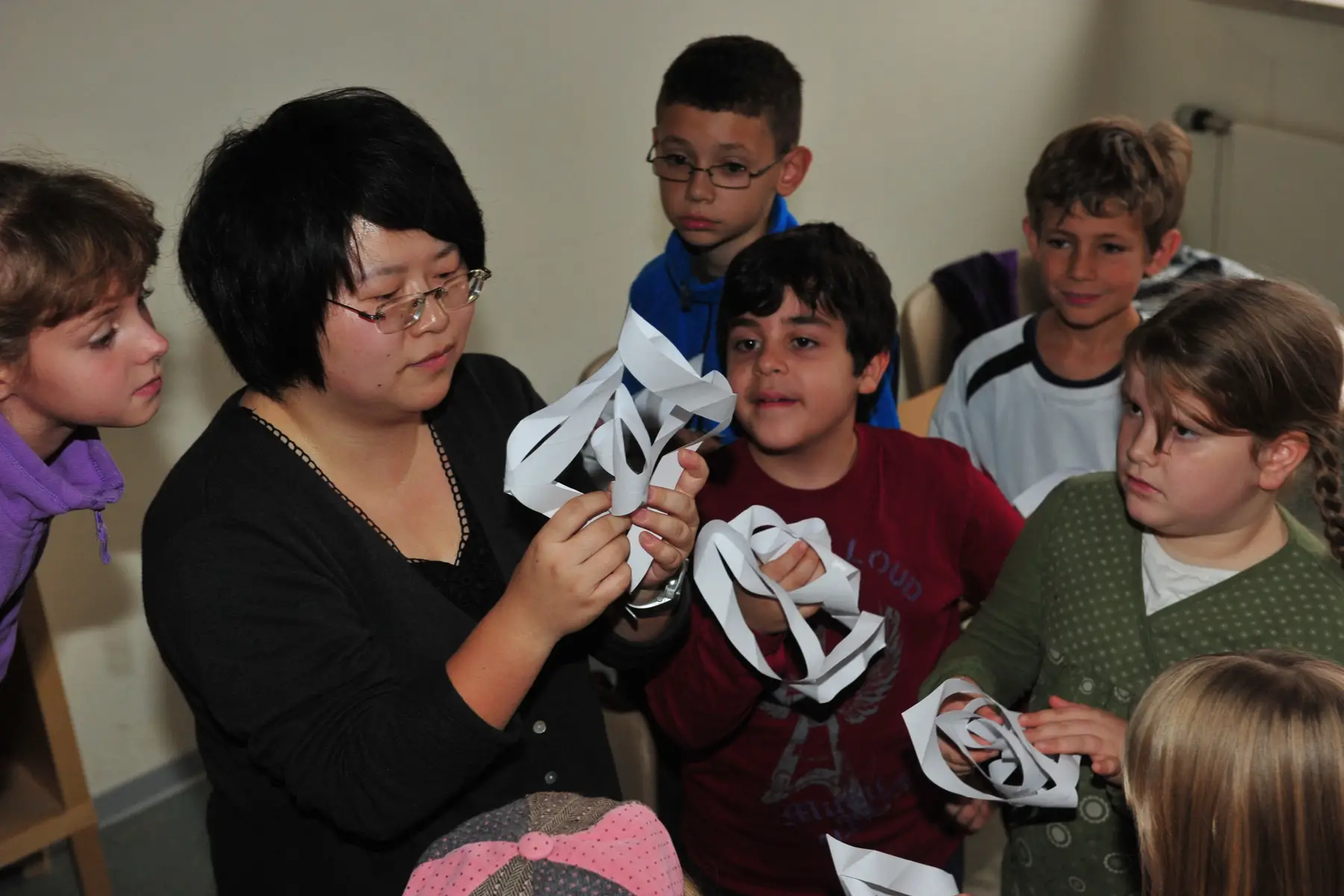
Because international schools receive no state funding, fees are generally more expensive. While they vary significantly between schools and states, you can expect to pay in the region of €8,000 to €14,000 per year for primary education. That said, some schools offer discounts or scholarships for families that are unable to afford the full costs.
Admission requirements and procedures vary from school to school, so make sure to check the details with the individual schools. As a rule, places are limited, so it’s important to apply as early as possible before the beginning of a new school year.
The pros and cons of international schools in Germany
Like public primary schools, international schools also have advantages and disadvantages. Below are some of the most important factors to consider when sending your child to one.
Advantages
Benefits of sending your child to an international primary school include:
- Better continuity of education for children who come to Germany after already starting school; students continue learning a familiar curriculum in their first language
- Smaller class sizes mean that teachers can devote more time to each student
- They offer more extra-curricular activities
- The high quality of teaching gives students the opportunity to progress to qualifications such as the International Baccalaureate (IB) or IGCSE
- Students get to experience a multicultural learning environment with peers and teachers from around the world
Disadvantages
Disadvantages of attending an international school include:
- Higher costs; most international schools receive no state financial support so they charge more in annual fees
- Less integration into German culture and society
- Children at international schools won’t learn primarily in the German language, so their German won’t develop as much
- Entry requirements; some schools are over-subscribed, so you typically have to apply earlier and meet stricter admissions criteria
Useful resources
- Federal Ministry of Education and Research (Bundesministerium für Bildung und Forschung – BMBF) – the German ministry that oversees education in the country
- Association Montessori Internationale (AMI) – enables you to find a Montessori school in Germany
- Bund der Freien Waldorfschulen – an interactive map that allows you to search for Waldorf schools in Germany
